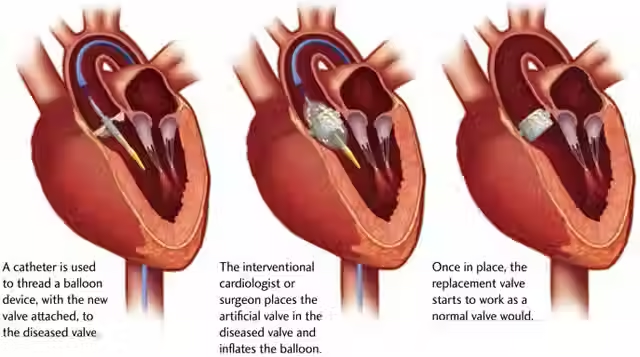What is Transcatheter Aortic Valve Replacement (TAVR) and Who is it For? A Guide to Understanding Your Heart Valve Options
- Kiran Reddy
- Aug 7
- 1 min read

What is Transcatheter Aortic Valve Replacement (TAVR)?
Transcatheter Aortic Valve Replacement (TAVR) is a minimally invasive heart valve procedure that treats severe aortic stenosis by replacing the diseased aortic valve without open-heart surgery. Instead of opening the chest, a cardiologist inserts a thin tube called a catheter through a small incision—usually in the leg—to deliver and implant a new valve.
How is TAVR Different from Open-Heart Surgery?
Traditional surgical aortic valve replacement (SAVR) involves opening the chest and temporarily stopping the heart. TAVR is far less invasive. The average TAVR procedure takes about one hour, compared to four hours for open-heart surgery. Patients usually spend less time in the hospital, recover faster, and experience fewer complications
Who Can Benefit from TAVR?
TAVR is approved for patients with severe aortic stenosis, whether they have symptoms or not. Candidates may include:
● People with shortness of breath, chest pain, or fainting spells.
● Patients with no symptoms but severe narrowing of the aortic valve diagnosed by a cardiologist.
Over 1 million patients worldwide have been treated with the Edwards SAPIEN TAVR valves, proving the safety and success of this heart valve therapy across all surgical risk levels.
Why Choose TAVR?
● Minimally invasive procedure—no need to open the chest.
● Faster recovery—many patients go home the next day.
● Proven results—studies show TAVR is as safe and effective as open-heart surgery for many patients.
If you’ve been diagnosed with severe aortic stenosis, talk to your cardiologist or heart valve team about whether TAVR is the right option for you.




Comments